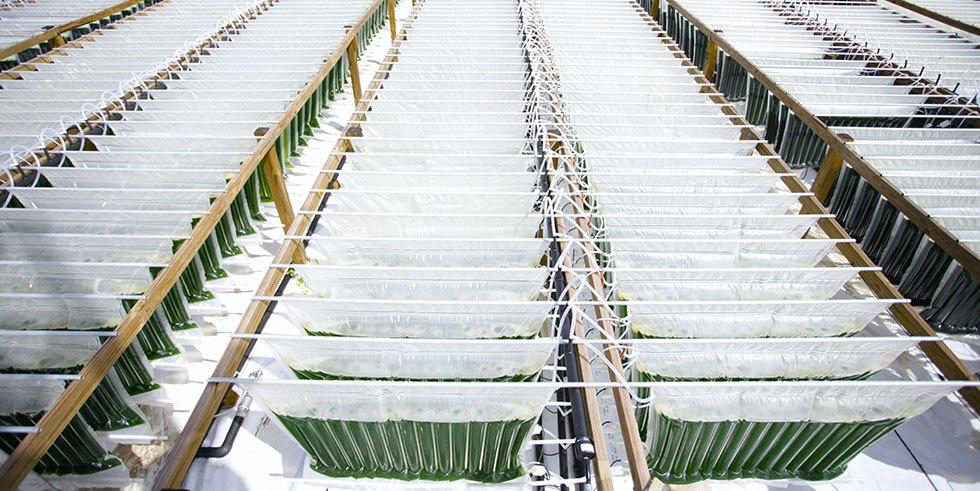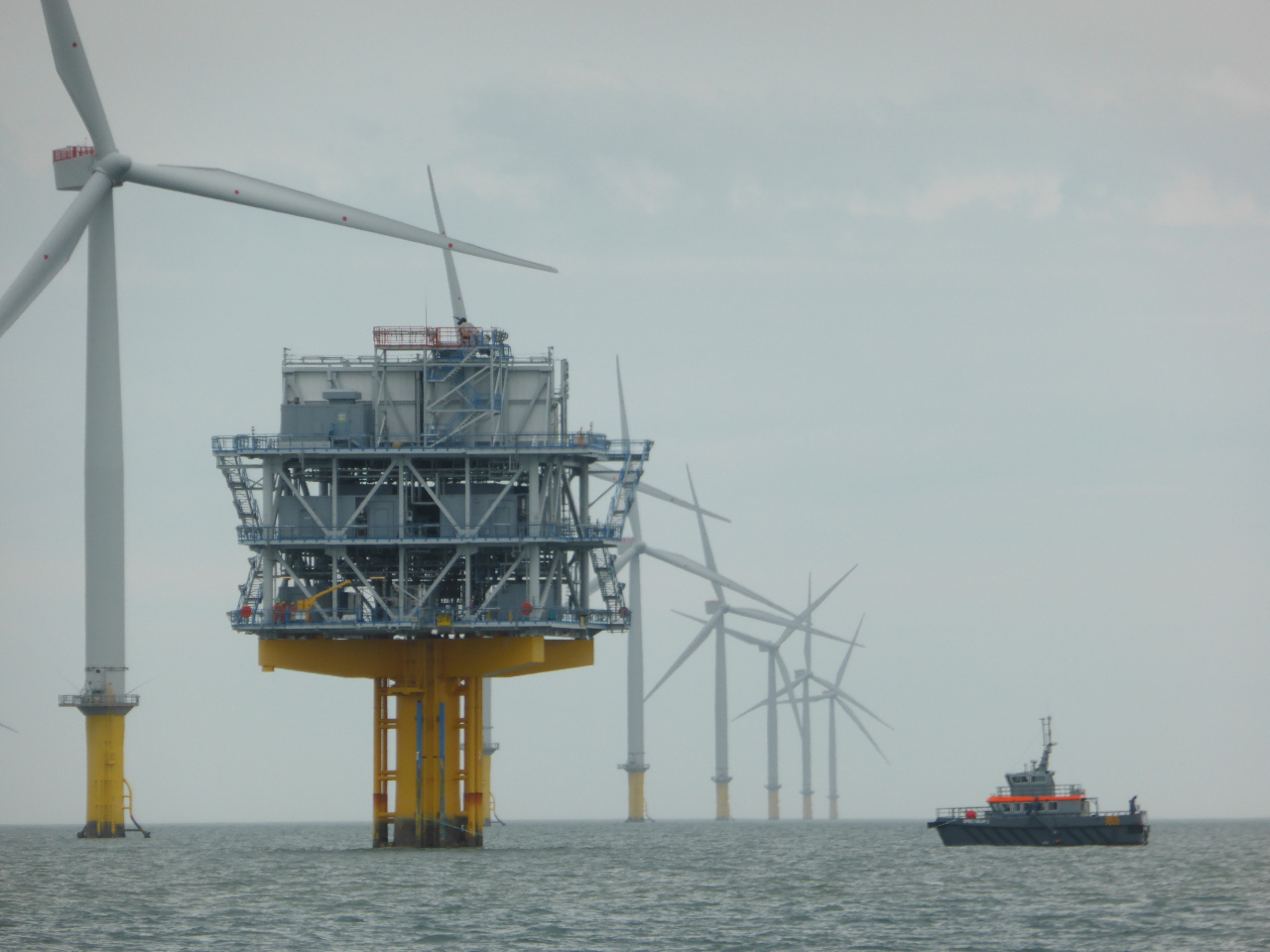
"Floating solar" was just one big idea that came to the fore in the 2010s. (Image: Tom Wang/Adobe Stock)
TriplePundit relaunched this week with a focus on solutions journalism. We'll now embed this style of reporting across all of our coverage for the first time, but we've highlighted social, economic and environmental solutions on the site for years. As we look toward our next step, we couldn't help but think about some of the ideas and innovations touted as "the next big thing" in years past. Which ones took off, and which ones faded away? Read on for the details.
The SunShot initiative: Driving down the cost of solar energy
Electricity sourced from solar cost about 36 cents per kilowatt-hour in 2010, compared to less than 15 cents for energy produced from fossil fuels. Launched in 2011, the U.S. Department of Energy's SunShot Initiative — inspired by President John F. Kennedy and his legendary Moonshot program — aimed to leverage public and private investment to dramatically drive down the cost of solar within a decade.
"Specifically, the SunShot goal is a 75 percent reduction in the total cost of solar energy by 2020," TriplePundit contributor Tina Casey reported in 2012. "At that price point, DOE predicts that solar power would flood into the mass market and account for up to 18 percent of U.S. electricity generation by 2030."
So, what happened? Thanks to SunShot and similar efforts around the world, the International Energy Agency deemed solar the "cheapest electricity in history" in 2020. On average, utility-scale solar now costs less than 5 cents per kilowatt-hour worldwide. Still, a "flood into the mass market" is a stretch — solar photovoltaics account for 3.4 percent of electricity generation in the U.S. and about 4.5 percent globally — but analysts now see this decade as the tipping point.
"Solar PV’s installed power capacity is poised to surpass that of coal by 2027, becoming the largest in the world," according to 2023 projections from the International Energy Agency. "Cumulative solar PV capacity almost triples in our forecast, growing by almost 1,500 gigawatts over the period, exceeding natural gas by 2026 and coal by 2027."

Edible food packaging: Water in membranes and cookie coffee cups
As the waste created by our addiction to convenience became more visible, innovators started looking around for alternatives to single-use packaging. Some of the boldest dared to ask: What if the packaging became part of the product?
Student designers developed the “Ooho” water container in 2014, aiming to replace plastic bottles with an edible membrane. "Because the Ooho is made from natural ingredients, the water sphere is completely biodegradable — or edible — after its useful life," TriplePundit contributor Alexis Petru reported. Soon after, Stonyfield Organic launched frozen yogurt capsules packaged in an edible outer layer made from fruit, and Seattle's Best Coffee teamed up with KFC in the U.K. to create edible coffee cups made from cookies.
So, what happened? Needless to say, edible food packaging never really caught on. The concept comes with a number of unanswered questions — namely how to ship it and store it without the outer, supposedly edible layer becoming dirty. Most now consider other alternatives like packaging reuse and refill systems to be a more viable way to reduce waste. But edible packaging innovators haven't lost hope. The food tech company Foodberry, for example, says it has more than 20 patents for food products packaged in edible, plant-based shells — including hummus, ice cream and coffee.

Hyperloop: Solving our transit woes with magnets and capsule cars
Elon Musk first shared his idea for a high-speed ground transport system called the Hyperloop back in 2013. The futuristic concept envisioned passengers traveling in magnet-propelled capsules at more than 750 miles per hour. Musk open-sourced the early plans, and several startups took up the mantle.
Early test trips in California and Nevada were underwhelming — one "lasted a few seconds before ending in a massive plume of sand," former TriplePundit executive editor Leon Kaye reported — but people still seemed convinced the technology could reshape mobility as we know it.
So, what happened? Progress on the Hyperloop never matched the hype, but the dream lives on. The startup Hyperloop One merged with Virgin in 2017 and completed its first passenger test in Nevada in 2020. Though the two test passengers only reached speeds of 100 miles per hour (slower than some commuter trains), the company considered it a major milestone. Other companies including Hyperloop Transportation Technologies and Musk’s Boring Company also continue to pursue the technology.

Algae-based biofuel: From cars to airplanes
"Algae-based biofuel is a new energy source that has been getting a lot of attention lately," TriplePundit contributor RP Siegel reported in 2012. "Certain types of algae contain natural oils that can be readily distilled into a vegetable oil or a number of petroleum-like products that could serve as drop-in replacements for gasoline, diesel and jet fuel."
Airlines including United and Continental made headlines for flying with sustainable aviation fuel made from algae in 2011. As the decade wore on, stakeholders like the U.S. Departments of Energy, Agriculture and Defense started testing algae-based biodiesel for use in trucks, while consumer companies including Unilever looked to algae oil to replace petroleum-derived ingredients in personal care products.
So, what happened? Large oil firms including ExxonMobil were among the early investors in algae-based biofuel. In the years since, they've largely cut and run, and algae biofuels are hardly the norm. The global algae biofuel market was valued at around $5 billion in 2020, compared to more than $4 trillion for the fossil fuel sector. But investors still see the potential, particularly in aviation, and algal oils are now fairly commonplace across the personal care sector.

Offshore renewables: Seeking more power at sea
As the early wind industry got off the ground, innovators began to look offshore for the promise of greater efficiency and more consistent wind speeds to drive costs down. The London Array, at time the largest offshore wind farm ever built, went online in 2013, producing "enough electricity for half a million homes," TriplePundit founder Nick Aster reported. Two years later came the 700-megawatt Borssele wind farm off the coast of the Netherlands. Electricity from Borssele cost around 8 cents per kilowatt-hour, making it the cheapest offshore wind farm ever seen, and the sky seemed the limit for the technology.
Meanwhile, the growing solar sector was also looking to the seas to overcome some key limitations. Namely, solar installations require a lot of land — even more so 10 years ago when solar panels were about half as efficient as they are today. High temperatures further reduce the output of solar panels, meaning not all sunny locations were economical sites for solar in the early years.
Floating solar installations showed promise in addressing these challenges, allowing for solar development in areas where land is scarce and leveraging the cooling effect of water to counteract efficiency losses tied to heat. Floating arrays also come with a side benefit of reducing water evaporation from at-risk lakes and reservoirs. Following early prototypes in Japan, California and Italy, the world's largest floating solar test bed came online in Singapore in 2016, TriplePundit contributor Nithin Coca reported.
So, what happened? Only around 7 percent of global wind power capacity is installed offshore today, according to the International Energy Agency. But the IEA expects the offshore wind sector to turn a major corner and "grow rapidly in the coming years." The potential is certainly there, with the U.S. Department of Energy estimating at least 1.5 terawatts in offshore wind power is technically available for development off the contiguous U.S. alone.
It's a similar story with floating solar. Around 3 gigawatts worth was installed worldwide as of last year, compared to more than 700 gigawatts of land-based solar. But people still talk about it and say the opportunity is vast. For its part, Singapore never gave up. It installed the world's largest utility-scale floating solar array atop a reservoir in 2021, with two more in the works. One recent piece of research estimated 35,000 terawatt-hours of floating solar power potential off the coast of Indonesia alone, which is more than all the energy currently produced on Earth. And the island nation is paying attention, powering on its largest floating solar array earlier this year — expected to be the first of many.
Live and learn
Not everything we try will work, and especially not right away. But these innovations and ideas walked so those of tomorrow can run. Check out our coverage of the next generation of environmental solutions to learn more.

Mary has reported on sustainability and social impact for over a decade and now serves as executive editor of TriplePundit. She is also the general manager of TriplePundit's Brand Studio, which has worked with dozens of organizations on sustainability storytelling, and VP of content for TriplePundit's parent company 3BL.














